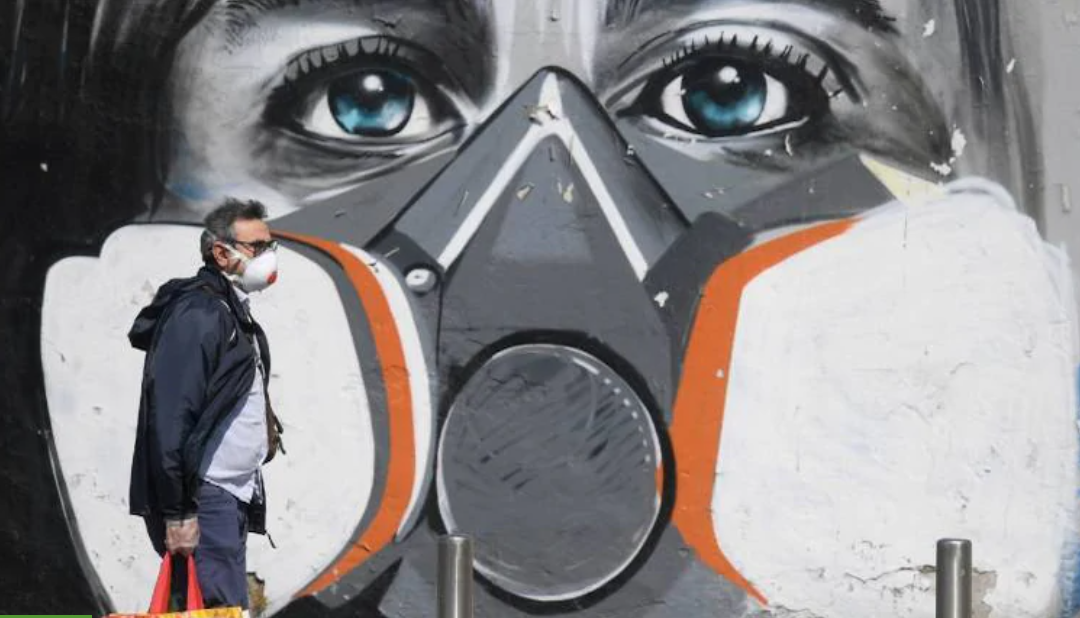Pankhuri Bansal and Badri Narayanan Gopalakrishnan
COVID-19 has claimed over 160,000 lives worldwide. Technological changes have had mixed impact historically, including alternative theories on the role of research on virology or commercialisation of wildlife markets in causing COVID-19 in China.
How do disruptive technologies assist in speeding up the battle against the virus and how can SMEs in India leverage this opportunity to innovate.
Artificial Intelligence (AI) has helped scientists and virologists to understand the genetic properties of COVID-19 much faster than any other virus before. It took only a month in China for scientists to recreate the genetic components of the virus using AI algorithms as compared to the breakout of SARS in 2003 which took over several months to recreate the genome sequence.
London-based BenevolentAI drug-company has an AI-powered algorithm that has made several recommendations of drugs that could potentially work to combat the virus derived from an AI-based knowledge graph, and is currently in the trial phase. Similarly, Google’s AI wing, DeepMind has been deploying neural networks, a branch of AI that works just like a human brain with deep neurons, to understand deeper the protein structure of the virus. These protein structures help in identifying the shape of receptors which can disrupt vital activities within the cells of a virus. As a result, potential targeted drugs can be developed.
Apple and Google have formed a partnership to launch the COVID-19 tracing app, a tool that has the potential to help contain the spread. In some cases, AI is helping in comprehending the spatial and geographical distribution, identification and tracking of the coronavirus patients. Large datasets released by the governments are being used with the help of machine learning models to find a correlation between different characteristics of the population contributing towards the fatalities and the number of cases in particular regions. These characteristics are the policies of the countries, cultural norms of greeting, climatic conditions, median population age, dietary habits, population density, etc. A study using decision tree algorithm has been able to point out that obesity is the single-biggest factor for COVID-19 hospitalisations in New York City.
Recently scientists developed an AI-powered diagnostic system using deep learning algorithms that can detect the presence of COVID-19 virus in chest X-rays within 20 seconds with 96 percent accuracy. Indian tech and pharmaceutical companies can leverage such opportunities to find innovative solutions to diagnostics and drug creation for the virus.
Several countries have rejected thousands of medical masks, testing kits and ventilators from Chinese suppliers on account of being defective. The interdependence and inter-linkages of global value chains can make it difficult to track and trace shipments and identify the source of unethical and faulty goods/components. With the growing need to fight counterfeit drugs, in 2018, NITI Aayog pilot-tested blockchain to create transparent drug supply chains due to its nature of being immutable and accountable. It also allows Indian drug manufactures to adhere to international quality standards, thus increase their mark in global exports and kickstarting the campaign to promote ‘Make in India’.
With billions of funds flowing into charities for COVID-19 relief, blockchain-based charity platforms can provide great accountability to track and manage these funds. It provides transparency to donors to keep an account of where their funds are being used, the government can track the efficient utilisation of resources, and ensure that the funds are reaching the beneficiaries as targeted. Binance Charity Foundation is one such example that launched its donation portal at the UNCTAD World Investment Forum.
There are other innovative ways in which disruptive technologies are being used to help combat the virus. A small medical firm in Chennai has manufactured face shields for healthcare professionals using 3D printing technology. AI-based robots and drones are also being deployed for communicating with patients and patrolling public places. Such innovative efforts across India should be escalated to mass-produce other personal protective equipment (PPE). The SMEs are well-positioned to take risks and experiment such new technologies, given their scale advantage and support from the government.
However, one must keep in mind the limitations of the technology. AI models are as good as the data it is fed and it is arduous to make any out of sample predictions using these algorithms. With limitations and inaccuracy of the data reported by the governments/communities and the unpredictable nature of the virus, human judgement and experience are equally important as humans can apply their intuition and knowledge to novel situations, unlike AI algorithms, to make best guesses for the right action.
Thus, human creativity and co-operation should not be undermined and a collaborative approach between technological systems and human expertise from different domains is needed to help combat the virus.
This article was originally published in Money Control

